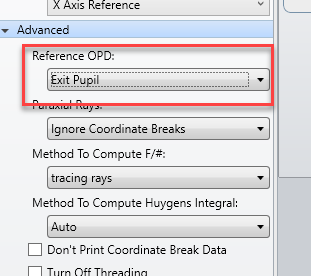Hello there Zemax community,
I have an understanding question that maybe you can help me get through.
I know that the wavefront map evaluated at the image plane corresponds to the optical path difference or the difference in wavefront with respect to an ideal spherical wavefront with its origin positioned at the exit pupil. In this way, the wavefront map provides an indication of how does the wavefront deviate from the case of an ideal spherical wave (please let me know if my understanding is not accurate)
How does this work for wavefront maps evaluated at different surfaces from the final image surface? What is the reference position in this case? For surfaces different than the image surface, does the reference spherical wavefront still holds and makes sense?
Finally, I would like to know if there is any way to obtain the “raw wavefront” of the field. Instead of obtaining the difference with respect to a reference, is it possible to extract the phasefront from the field at any given surface position within an optical system?
Any comment or feedback will be highly appreciated!





